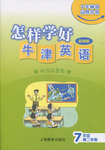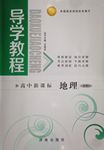题目内容
4.Throughout the world,clothing has many uses.It is used to provide protection from cold.It is also worn to prevent others from seeing specific parts of one's body.However,the parts of the body that must be covered vary widely throughout the world.Some clothing is worn to provide supernatural protection.Wearing a lucky shirt to take an exam is calling for supernatural assistance.People in all cultures use clothing and other forms of bodily decoration to communicate status(身份),intentions and other messages.In North America,we dress differently for business and various leisure activities.North American women usually are much more knowledgeable of little difference in messages communicated by clothes than men.At times,this leads to silly mistakes of understanding of female intentions on the part of men.Of course,clothing styles also are intended to communicate messages to members of the same gender(性别).
Long before we are near enough to talk to someone,their appearance tells their gender,age,economic class,and often even intentions.We begin to recognize the important cultural clues at an early age.The vocabulary of dress that we learn includes not only items of clothing but also hairstyles,jewelry,and other body decoration.In most cultures,however,the same style of dress communicates different messages depending on the age,gender,and physical appearance of the individual wearing it.
Putting on certain types of clothing can change your behavior and the behavior of others towards you.This can be the case with a doctor's white lab coat,or an army uniform.Most uniforms are clearly symbolic so that they can rapidly and unmistakably communicate status.For instance,the strange hairstyle and clothing of the English"punks"are essential aspects of their uniforms.
There are many forms of body decoration other than clothes that are used around the world to send messages.These include body and hair paint,and even body deformation.When doctors put braces on teeth,they are actually doing the same thing-deforming or reforming a part of the body to make it more attractive.
33.Which of the following is the best title for this passage?D
A.Clothing and Culture
B.Ways of Sending Message
C.Clothing and Social Behavior
D.Communication through Clothing
34.Some people wear lucky shirts to take an exam because they believeB.
A.clothes can hide t heir fear for the exam
B.clothes have extraordinary power
C.shirts can make them more comfortable
D.shirts provide protection against bad weather
35.From the passage,it can be inferred thatA.
A.clothing plays an important role in social activities
B.words of dress are unable to communicate different messages
C.dress is better than language in communicating messages
D.messages communicated by clothes are the same in different cultures.
分析 衣服有很多作用,本文作者主要讲述衣服和许多身体的装饰物传达人的地位,性别,年龄,意图或者其他信息,衣服也可以改变人的行为或者周围人的行为举止.
解答 33.D主旨分析题.从文中第二段People in all cultures use clothing and other forms of bodily decoration to communicate status(身份),intentions and other messages在所有文化中,人用服装和其他形式的身体装饰传达身份、意图和其他消息,从全文看,可知作者多次提出衣服communicate messages to members of the same gender传达同一性别成员的信息等,故选D.
34.B细节理解题.从文中第一段Some clothing is worn to provide supernatural protection.Wearing a lucky shirt to take an exam is calling for supernatural assistance.穿一些衣服是为了提供超自然的保护.穿着一件幸运衫去参加一门考试是在呼吁超自然的帮助.故他们相信衣服有非同一般的力量.故选B.
35.A推断分析题.排除法.从文中第二段In North America,we dress differently for business and various leisure activities.在北美,我们穿着不同的衣服参加商业和各种各样的活动,故可以推断出A选项,衣服在社交活动中扮演重要角色;而选项B,从文中第三段The vocabulary of dress that we learn includes not only items of clothing but also hairstyles,jewelry,and other body decoration.我们学到的礼服的词汇不只包括衣服的商品还有发型、首饰和其他身体装饰.故不能推断出礼服的词汇不能传达不同的信息,故B不正确.而选项C,文中并未将衣服与语言作对比,故无从推断,故C不正确;而选项D,从文中第二段,单独列举北美人的文化,不能推断出不同文化中衣服传达的信息是一样的,或者根据常识判断此选项也可以,可知D不正确.故选A.
点评 本文是一个科教类阅读理解,题目涉及多道细节理解题,做题时结合原文和题目有针对性的找出相关语句进行仔细分析,结合选项选出正确答案.推理判断题也是要在抓住关键句子的基础上合理的分析才能得出正确答案,切忌胡乱猜测,一定要做到有理有据.

 怎样学好牛津英语系列答案
怎样学好牛津英语系列答案 导学教程高中新课标系列答案
导学教程高中新课标系列答案I've never had an ear infection(感染)or even an earache in my(21)Blife,yet over the next few days,I felt a dull and sometimes sharp pain in my ear-especially when sleeping on my(22)Aside.
Over the weekend,I tried to use a Q-Tip(棉签)on my left ear,but it wouldn't go in.It hurt a lot.23)D,I could still use these earbuds,because the left one was now noticeably(24)Cthan the right one.
I'm ashamed to25)Cthat it took me until Sunday to understand what now seems to have been obvious:The missing part of the earbud was(26)Ain my ear,thus the ear ached.
I just couldn't believe it was in my ear because I could27)Djust fine.I wasn't in that much pain,(28)Bnot all the time.I asked my Facebook friends if such a thing was(29)A:Could I really have a piece of rubber in my ear and not really(30)Bit?Friends all suggested that I need medical attention as soon as possible.One said he was nearly deaf in one ear,due to not dealing with an ear injury(31)Denough.
With that in mind,I walked unwillingly to the clinic(诊所)on Monday night.Sure enough,the nurse found the earbud tip in my left ear.Three times,she tried to dig it out,causing much(32)C.Three times,she failed,before the clinic sent me home33)Aa note suggesting I see an ENT(ear,nose,and throat)specialist as soon as possible.
So I(34)Can ENT clinic this morning-with no small amount of nervousness after what I'd gone through last night.However,I was in excellent hands.The doctor(35)Bme I had nothing to worry about.
After taking a photo of the earbud tip,he had another doctor remove it.It took only three seconds,and was totally painless.Victory at last!
| 21.A.future | B.whole | C.public | D.private |
| 22.A.left | B.other | C.opposite | D.different |
| 23.A.Naturally | B.Obviously | C.Terribly | D.Strangely |
| 24.A.lighter | B.bigger | C.shorter | D.thicker |
| 25.A.guess | B.agree | C.admit | D.remind |
| 26.A.stuck | B.stopped | C.placed | D.saved |
| 27.A.rest | B.sleep | C.play | D.hear |
| 28.A.at most | B.at least | C.at last | D.at first |
| 29.A.possible | B.funny | C.common | D.special |
| 30.A.report | B.notice | C.take | D.move |
| 31.A.carefully | B.suddenly | C.patiently | D.quickly |
| 32.A.sadness | B.danger | C.discomfort | D.change |
| 33.A.with | B.for | C.in | D.on |
| 34.A.introduced | B.checked | C.approached | D.considered |
| 35.A.blamed | B.promised | C.warned | D.guided |
He(21)Athat,in his opinion,it all came from an(22)Awith his mother that happened when he was about 2 years old.He had been trying to(23)Ca bottle of milk from the refrigerator when he lost his(24)Con the slippery bottle and it(25)B,making its contents pouring all over the kitchen floor.When his mother came into the kitchen,instead of(26)Cat him,giving him a lecture,or punishing him,she said:"Edwards,what a(27)Aand wonderful mess you have made!I have(28)Dseen such a huge pool of milk.Well,the damage has already been done.Would you like to(29)Adown and play in the milk for a few minutes(30)Cwe clean it up?"Indeed,he did.After a few minutes,his mother said:"You know,Edwards,(31)Dyou make a mess like this,you have to clean it up(32)Cand restore everything to its proper order.So,how would you like to do that?We could use a sponge (海绵),a towel,or a mop.Which do you (33)C
?"He chose the sponge and together they(34)Athe milk.
His mother then said:"You know,what happened just now is a(35)Dxperiment in how effectively to carry a big milk bottle with two (36)Chands.Let's go out in the backyard and fill the bottle with water and see if you can(37)A
a way to carry it without dropping it."The little boy(38)Bthat if he held the bottle at the top near the lip with both hands,he could carry it without dropping it.
This scientist then(39)Dthat it was at that moment that he knew he didn't need to be afraid to make(40)D.
Wouldn't it be great if all parents would respond the way Edwards's mother responded to him?
| 21.A.responded | B.advised | C.added | D.promised |
| 22.A.experiment | B.accident | C.experience | D.challenge |
| 23.A.send | B.remove | C.bring | D.cool |
| 24.A.way | B.control | C.balance | D.hold |
| 25.A.rolled | B.fell | C.turned | D.burst |
| 26.A.crying | B.staring | C.shouting | D.laughing |
| 27.A.great | B.powerful | C.disappointing | D.curious |
| 28.A.shortly | B.always | C.already | D.rarely |
| 29.A.get | B.put | C.take | D.turn |
| 30.A.when | B.until | C.before | D.after |
| 31.A.however | B.whatever | C.wherever | D.whenever |
| 32.A.at random | B.at ease | C.at last | D.at a loss |
| 33.A.like | B.take | C.prefer | D.decide |
| 34.A.cleaned up | B.drank up | C.put aside | D.took apart |
| 35.A.finished | B.failed | C.shared | D.valued |
| 36.A.smooth | B.clever | C.tiny | D.wet |
| 37.A.discover | B.invent | C.imagine | D.make |
| 38.A.knew | B.learned | C.convinced | D.thought |
| 39.A.argued | B.regretted | C.expected | D.commented |
| 40.A.differences | B.difficulties | C.decisions | D.mistakes |